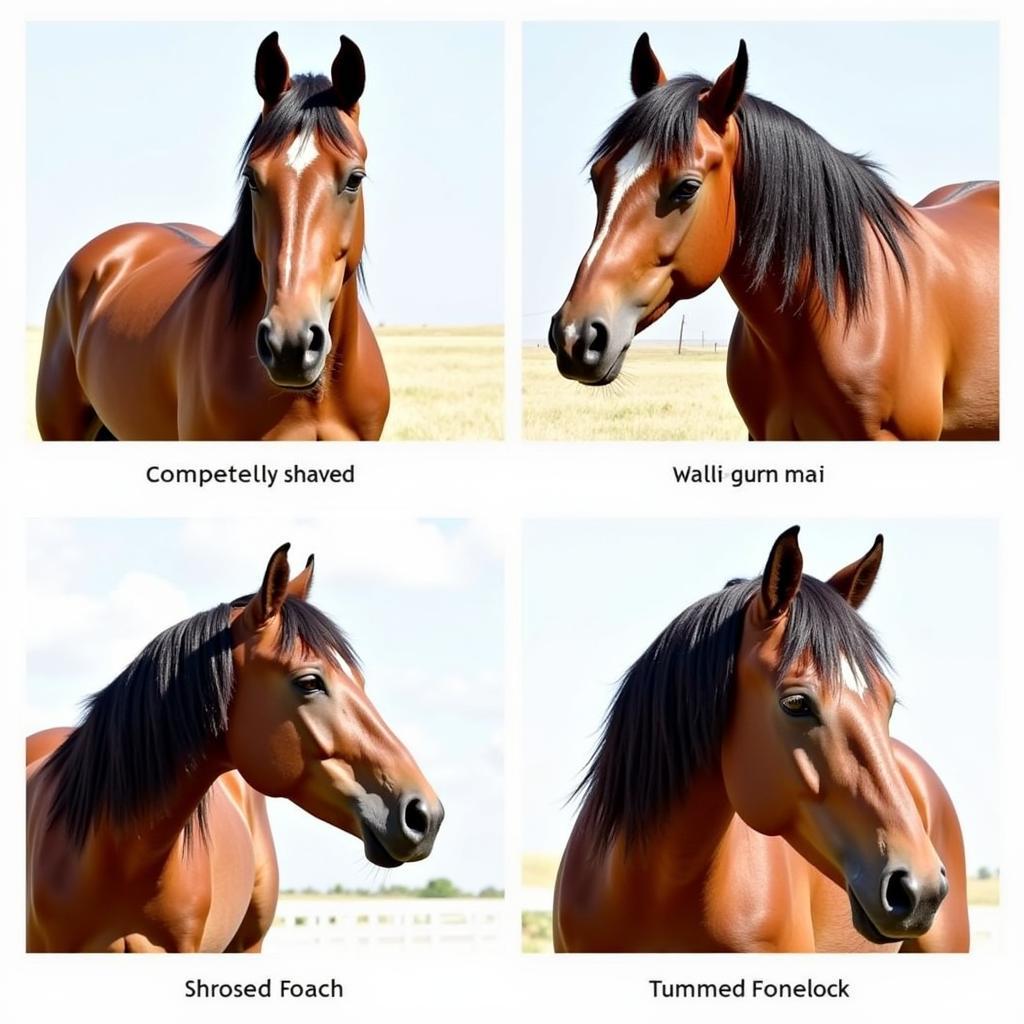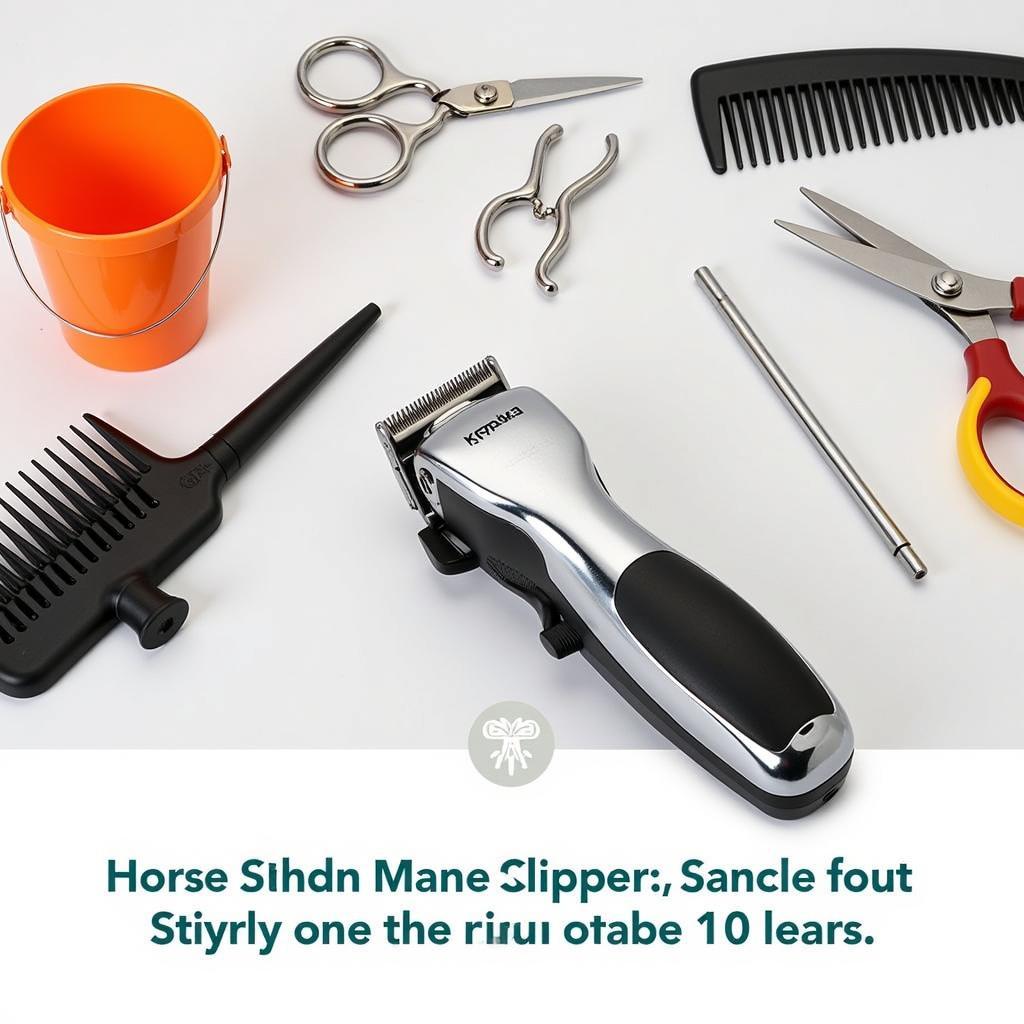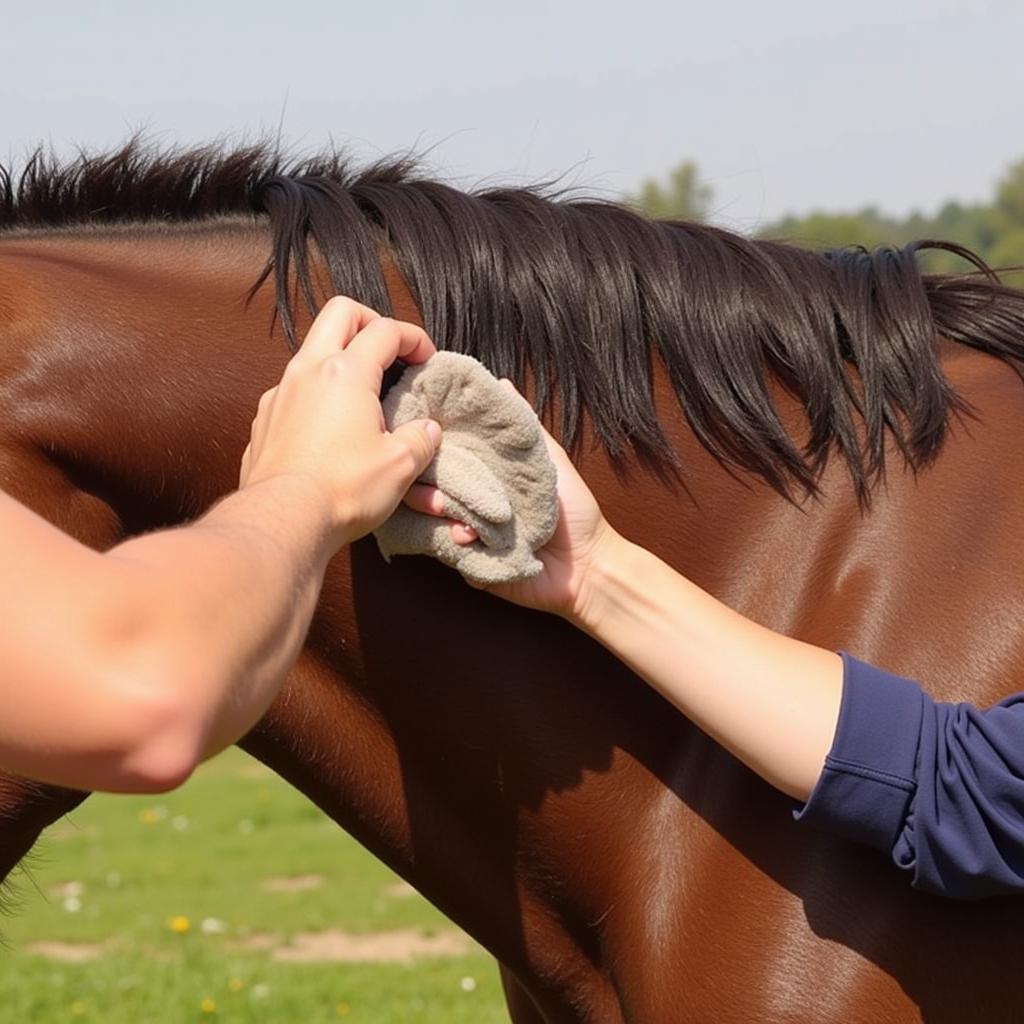A Roached Horse Mane might seem like a simple hairstyle for your equine friend, but it actually involves a few considerations for their well-being and overall appearance. Whether you’re facing a stubborn cowlick, dealing with mane loss, or simply prefer a clean, practical look, understanding how to roach your horse’s mane correctly is crucial.
 Different Roached Horse Mane Styles
Different Roached Horse Mane Styles
What Does “Roached Mane” Mean?
Roaching a horse’s mane means to clip it very short, close to the crest of the neck. This technique creates a distinct look and serves practical purposes depending on the horse’s breed, discipline, and individual needs.
Reasons for Roaching a Horse’s Mane
There are several reasons why horse owners choose to roach their horse’s mane:
- Practicality: A roached mane requires minimal grooming, making it ideal for work horses, horses in training, or those living in hot climates.
- Show Standards: Some breeds, like the Morgan Horse, often sport roached manes in the show ring, highlighting their conformation and neck musculature.
- Mane Issues: Roaching can be a solution for horses with a persistent cowlick, thin mane, or those prone to mane rubbing.
- Medical Reasons: In cases of skin infections, parasites, or injuries, a roached mane allows for easier treatment and observation.
Different Roaching Styles
Roaching a mane doesn’t always mean a completely shaved look. Here are a few popular styles:
- Full Roach: This involves clipping the entire mane down to the skin, leaving a clean, bare look.
- Short Roach: Leaving a small amount of mane, about 1/4 inch long, offers a slightly softer appearance while still remaining low-maintenance.
- Graduated Roach: This style involves gradually increasing the mane length from the poll to the withers, creating a subtle, stylish look.
 Essential Horse Mane Clippers and Tools
Essential Horse Mane Clippers and Tools
How to Roach Your Horse’s Mane
Roaching a horse’s mane is best done by a professional, especially if you’re unfamiliar with using clippers or your horse is particularly sensitive. However, with the right tools and techniques, it’s a task many horse owners can handle.
Here’s a step-by-step guide:
- Gather your supplies: Sharp clippers with a #40 blade, a mane comb, scissors, and a bucket for the clipped hair.
- Prepare your horse: Groom your horse thoroughly to remove any dirt, tangles, or debris from the mane.
- Start clipping: Begin at the poll (the highest point of the horse’s head) and clip against the direction of hair growth in smooth, even strokes.
- Maintain consistency: Use a light touch and keep the clippers flat against the skin to avoid uneven patches or clipper marks.
- Check your work: Step back periodically to ensure you’re achieving the desired length and evenness.
- Trim the forelock (optional): You can leave the forelock long, trim it short, or incorporate it into a graduated roach style.
 Grooming a Horse with a Roached Mane
Grooming a Horse with a Roached Mane
Caring for a Roached Mane
While a roached mane requires less maintenance, it’s important to:
- Keep it clean: Regularly brush away dirt and sweat to prevent skin irritation.
- Protect from sunburn: Horses with roached manes are more susceptible to sunburn. Apply sunscreen to the exposed skin, especially during peak sun hours.
- Monitor for regrowth: As the mane grows back, decide if you’ll maintain the roached style or allow it to grow out.
Conclusion
Roaching a horse’s mane can be a practical and stylish choice for many horse owners. Whether you’re seeking a low-maintenance grooming routine, addressing mane issues, or aiming for a specific show ring look, understanding the different roaching styles and proper techniques can help you achieve the best results for your equine companion.
Remember, always prioritize your horse’s comfort and well-being throughout the process. If you’re unsure about roaching your horse’s mane yourself, consult with a professional equine stylist or veterinarian for guidance.
FAQs about Roached Horse Manes
1. Does roaching a horse’s mane hurt?
No, roaching a horse’s mane should not hurt if done correctly with sharp clippers. However, horses can be sensitive, so it’s important to use a gentle touch and avoid pulling on the hair.
2. How long does it take for a roached mane to grow back?
It typically takes a horse’s mane 6-12 months to grow back to its full length after being roached.
3. Can I roach my horse’s mane myself?
While it’s possible to roach your horse’s mane yourself, it’s recommended to seek professional help if you’re unfamiliar with the process or if your horse is particularly sensitive.
4. What are the disadvantages of roaching a horse’s mane?
Some potential disadvantages include increased risk of sunburn, a less natural appearance, and limited styling options.
5. Can I braid a roached mane?
No, a roached mane is too short for braiding.
Want to learn more about horse care?
Check out our article on wild horse pomeroy to expand your knowledge.
Have questions or need personalized advice? Don’t hesitate to contact us! Reach our team at 0772127271, email us at [email protected], or visit our facility at QGM2+WX2, Vị Trung, Vị Thuỷ, Hậu Giang, Việt Nam. We’re here to support you 24/7.